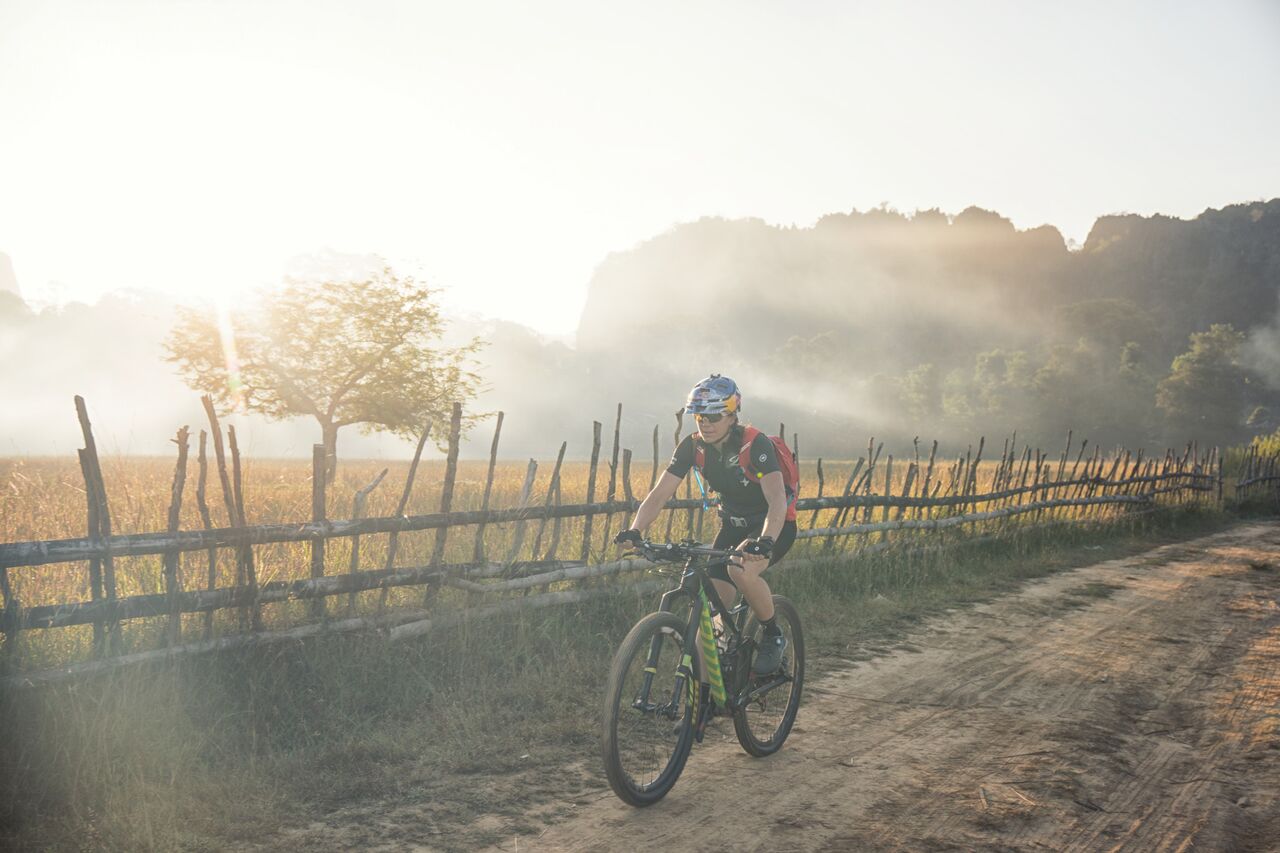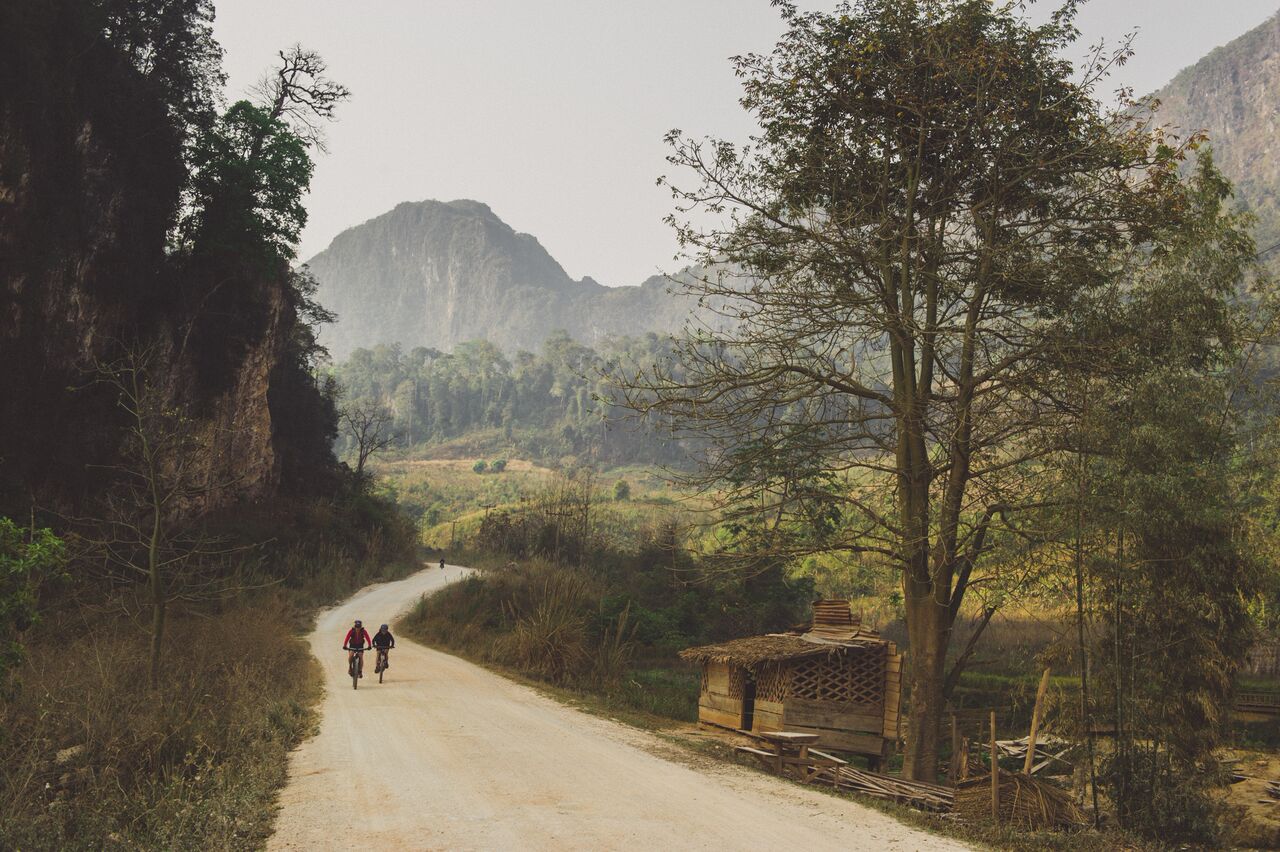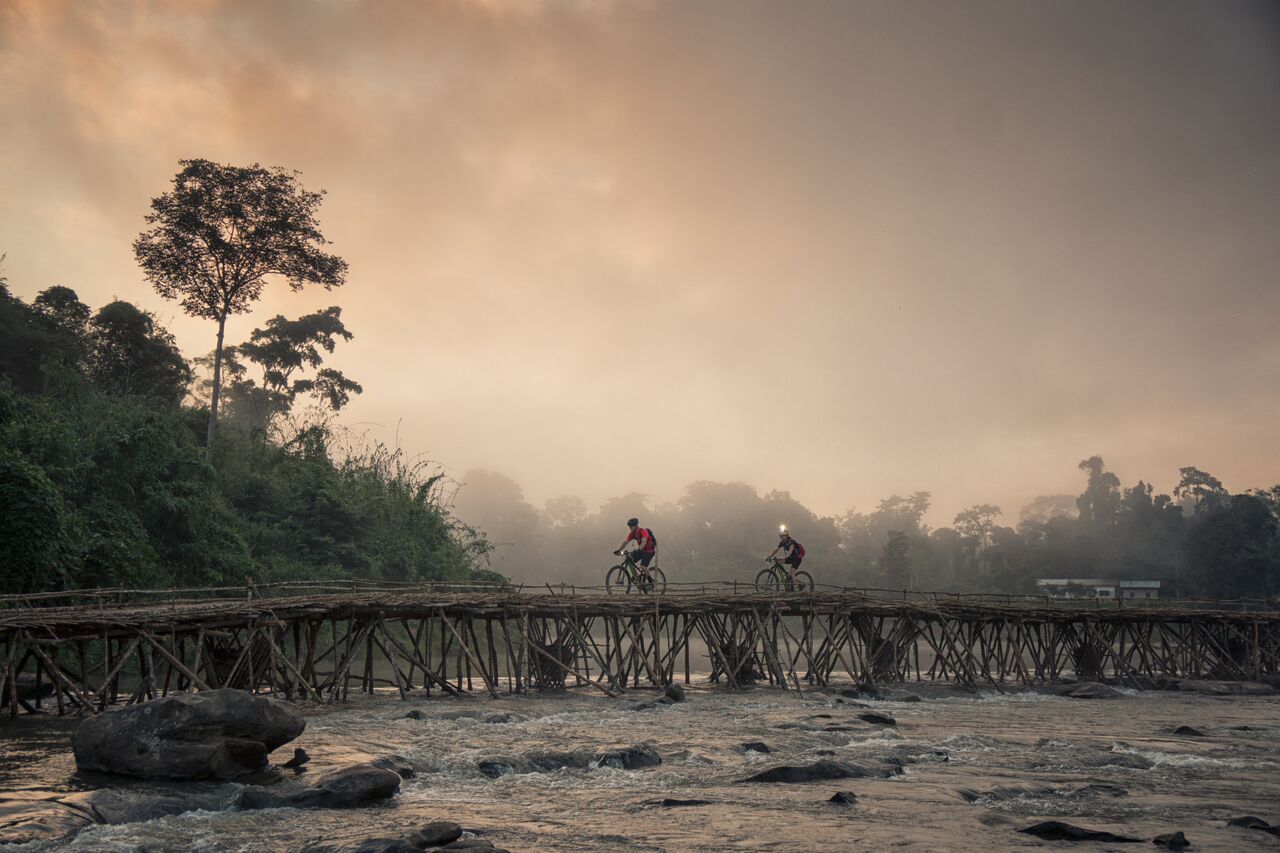Rusch Job: Blood Road
Originally posted on June 19, 2017 at 1:58 amWords by Rebecca Rusch
They call Ho Chi Minh Trail the Blood Road because so many people lost their lives there. This complicated network of paths and trails runs from north Vietnam through the jungles of Laos and Cambodia, then re-enters Vietnam near Ho Chi Minh City. The trail was the main supply route for soldiers, supplies and ammunition as the North Vietnamese moved to take over the South during the Vietnam War. By shielding the trail under thick jungle canopy, often pushing bicycles loaded with supplies, the North Vietnamese army was able to evade American airstrikes, eventually sending our troops back home with heads hung low. My father was one of the guys dropping bombs over there. He didn’t make it home. He was the navigator in an F4 Phantom fighter jet and on March 7, 1972, he was flying a strike mission to bomb trucks spotted along the Ho Chi Minh Trail in Laos. His plane was struck by ground fire and crashed to the jungle floor. That day, 45 years ago, he mingled his blood with the thousands of Lao, Vietnamese and Cambodian people who also died along the trail.

In 2015 I set out on the most important ride of my life. I went to ride the entire length of the Ho Chi Minh Trail and to search for the place where my father’s plane went down. My path as an athlete has always been unpredictable, but this was one ride I had to do. I had no idea what I would find, if I could even get there or what the riding would be like. I started this bike expedition with so many questions, but now I can look back and see that my choices have always been preparing me for and leading me to this ride. Something was calling me to the remote jungles of Southeast Asia: a magnetic pull toward the map coordinates in an Air Force crash report. I was finally ready and had all the tools and skills needed.

Just as it was 45 years ago, the bike is still the most efficient way to travel over there. Being on two wheels allowed me to cover distance and also be nimble enough to thread through the dense forest, dodge muddy trenches and cross rivers with washed out bridges. In the most remote areas, they had never seen a tourist or a carbon Niner bike or a Red Bull helmet. We stared at each other with wide-eyed wonder, using the universal greetings of a smile and palms pressed together with a head bow. Sitting in wooden huts, harvesting rice, raising children: This is the peaceful life they live now. But the scars of the past devastation are everywhere. Bomb craters mark the landscape like Swiss cheese, scrap metal from planes and bomb casings are repurposed as planters, buckets, roofs. There are even unexploded bombs that still threaten their daily lives. Despite all of that, they are content.
Our histories are intertwined with shared loss and bloodshed. Even though my father was one of the pilots raining bombs on them, they opened their homes and hearts to me. Without words, they understood my journey and the importance of this bike ride. It’s as if they had been expecting me for a long time. Ayre, the village chief in Ta Oy, told me through a translator that if his father had died there, he would have come searching too. As foreign as we may have seemed to each other, we discovered a kinship.

My athletic career has spanned more than 20 years. I’ve racked up countless wins and accolades. Since completing the journey down Blood Road, people keep asking me what race I’ll do next or if I’m retired. The word “retirement” means “stopping” to me. Riding makes me happy, and I’ll never stop pushing my limits on a bike. However, extreme performance doesn’t always equal extreme happiness. And some medals are not worn around your neck but instead are imprinted on your soul. As I neared the finish line of this 1,200-mile ride, I felt a sense of contentment and clarity that I had never experienced before. This ride wasn’t about death and destruction, but instead it was about healing, forgiveness and discovery. To me, Blood Road no longer represents a trail stained red, but instead a path to finding our family and shared connection in the most unexpected places.
For more information on Rebecca’s ride or to see the film “Blood Road,” check out bloodroadfilm.com. We’ll also be showing this film at Dirt Fest West Virginia.
This piece originally appeared in Dirt Rag 198. Subscribe now so that you’re first to get the next issue and sign up for our weekly email newsletter to get fresh content delivered to your inbox every Tuesday.